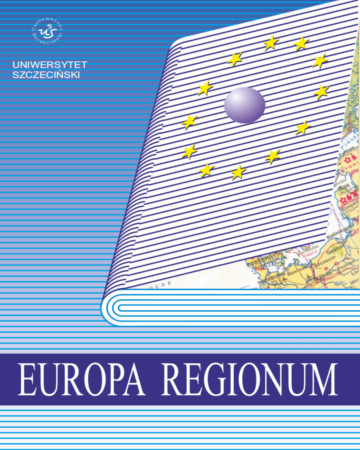
ISSN: 1428-278X
OAI
DOI: 10.18276/er.2016.28-17


Issue archive /
t. 28 2016
Uwarunkowania rozwoju turystyki transgranicznej na Zalewie Wiślanym
| Authors: | Tadeusz Palmowski |
| Data publikacji całości: | 2016 |
| Page range: | 16 (241-256) |
Abstract
Key terms: cross border tourism, natural environmental and cultural valour, Vistula Lagoon ports, Kaliningrad Oblast. The Vistula Lagoon is a wide spread water basin on the Polish Russian borderline separated from the Baltic waters by the narrow Vistula Spit. Several rivers flow into the Lagoon, enjoying shipping traffic of fishing, trade and sport vessels: The Vistula Lagoon is an important link in inland waterways and marine transport. The adjacent land boasts great nature environments as well as a tourism and recreational valour. These include, among others, nature reserves, landscape parks and areas embraced by Natura 2000. The Vistula Lagoon forms a natural link of the Eastern and Central Europe river network (waterway E-70). The picaresque sheltered waters of the Lagoon are an excellent area for water sports and sailing. There are in total twelve small Polish ports and havens around the Vistula Lagoon. The development and upgrading of their infrastructure (among others under the project Żuławy Loop) can have a significant impact on developing sailing tourism in the water basin and the ports of Elbląg, Frombork, Tolkmicko and Krynica Morska, which are also accessible for tourist boats. The sailing hinterland gained approximately 800 mooring stands for yachts that can call coastal ports. The key node tourism ports are called Elbląg, Krynica Morska, Tolkmicko and Kąty Rybackie. The Kaliningrad Oblast features an exceptionally favourable natural and cultural environment for the development of tourism. The Russian part of the Vistula Lagoon boasts nine ports and yacht havens. All havens, apart from the haven belonging to the Kaliningrad Yachts Club, require modernisation to revive various forms of tourist traffic. The most important infrastructure elements that need upgrading to develop tourism in the Russian part of the Vistula Lagoon include navigation infrastructure and dredging of water basins and waterways. Stimulation of small Lagoon ports, which in the XX century faced mainly political barriers, may provide an incentive for the development of marine and coastal tourism as well as the development of new, partner cross-border relations between Poland and the Kaliningrad Oblast. Joint cross border tourist routes on land and water or sea routes, or inland trails from Gdańsk to Kaliningrad through Elbląg and Malbork, could serve this aim as well as cruises to Hanseatic cities, development of yacht marines and sailing tourism in Gdańsk Bay and the Vistula Lagoon. Joint promotion of this interesting cross-border region rich in natural and cultural terms could be run in Poland, Russia and EU. Translated by Tadeusz Palmowski
Download file